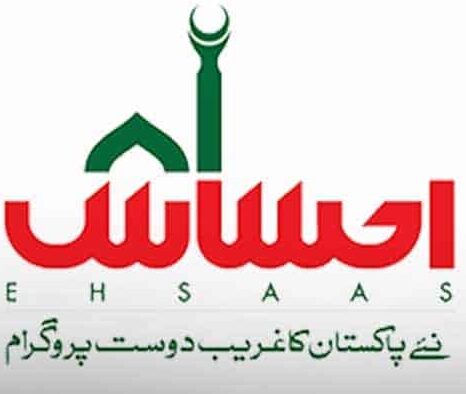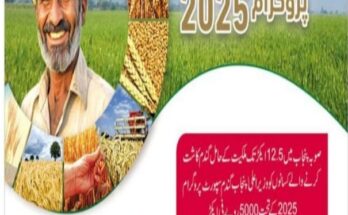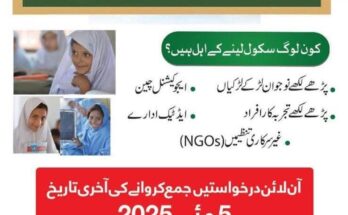Introduction
The Benazir Income Support Programme (BISP) is Pakistan’s flagship social safety net initiative, launched in July 2008 to address poverty and vulnerability among the country’s poorest households. Named in honor of former Prime Minister Benazir Bhutto, the program was established during a period of economic hardship marked by rapid food price inflation, rising fuel costs, and a global financial downturn. BISP aims to provide financial assistance to low-income families, with a particular focus on empowering women and promoting human capital development. Over the years, it has grown into one of the largest social protection programs in South Asia, disbursing billions of rupees to millions of beneficiaries. This article explores the origins, objectives, components, impact, and challenges of BISP, drawing on its evolution and contributions to poverty alleviation in Pakistan.
Origins and Context
BISP was initiated under the leadership of then-Prime Minister Yousaf Raza Gillani, with the endorsement of President Asif Ali Zardari, in response to economic challenges that eroded the purchasing power of many Pakistani families. Between 2005 and 2008, high inflation, coupled with soaring food and oil prices, exacerbated poverty, particularly among vulnerable households. Prior to BISP, Pakistan’s social safety net programs, such as Pakistan Bait-ul-Mal and Zakat, were limited in scope, poorly targeted, and lacked robust administrative mechanisms, with only 0.16% of GDP allocated to social protection in 2004. These programs often failed to reach the poorest segments of society, with significant resources misdirected to non-poor households.
BISP was designed to address these shortcomings by creating a transparent, targeted, and scalable cash transfer program. Established through an Act of Parliament, BISP operates under the executive patronage of the Prime Minister, with the President of Pakistan as its Chief Patron. Its core objective is to provide a minimum income support package to the chronically poor, cushioning them against economic shocks while promoting equitable wealth distribution and women’s empowerment.
Program Objectives
BISP’s objectives are twofold: short-term relief and long-term poverty reduction. In the short term, it seeks to mitigate the adverse effects of economic crises by smoothing consumption for low-income families. In the long term, it aims to reduce poverty, empower women, and foster human capital development through targeted interventions. The program prioritizes women as beneficiaries, channeling cash transfers directly to female heads of households to enhance their decision-making power within families and communities. Additionally, BISP aligns with global development goals, such as the Sustainable Development Goals (SDGs), by addressing malnutrition, education, and gender equality.
Key Components of BISP
BISP operates through a combination of unconditional and conditional cash transfer programs, complemented by initiatives aimed at skill development, health, and economic empowerment. Below are its main components:
1. Unconditional Cash Transfers (Benazir Kafaalat)
The core of BISP is the Unconditional Cash Transfer (UCT) program, known as Benazir Kafaalat, launched in 2008. This program provides quarterly cash payments to eligible families earning less than PKR 25,000 per month (approximately $90 in 2025). The payment amount has increased over time, from PKR 3,000 bimonthly in the early years to PKR 13,500 per quarter in April 2025. The program targets women-led households, particularly those facing economic hardship, such as widows or disadvantaged families. By 2023, the program’s coverage had expanded to over 9 million families, with a budget of PKR 404.2 billion, a 72% increase from the previous year.
2. Conditional Cash Transfers (Waseela-e-Taleem)
The Waseela-e-Taleem initiative, introduced as a conditional cash transfer (CCT) program, incentivizes primary school enrollment for children aged 5–12 from BISP-eligible families. Families receive additional quarterly stipends (approximately PKR 1,600 per child) contingent on at least 70% school attendance. By 2020, this program supported 2.4 million children, contributing to Millennium Development Goals related to universal primary education and poverty reduction. Research indicates that Waseela-e-Taleem has increased girls’ school enrollment, helping to reduce gender disparities in education, though challenges like cultural norms and child labor persist.
3. Benazir Nashonuma Programme
Launched to combat Pakistan’s high malnutrition rates (40.2% stunting, 28.9% underweight, and 17.7% wasting), the Benazir Nashonuma Programme targets pregnant and lactating women (PLW) and children under two years old. It provides additional cash transfers—PKR 2,000 per quarter for PLW and male children, and PKR 2,500 for female children—to encourage the uptake of health and nutrition services during the critical first 1,000 days of a child’s life. This initiative aligns with global evidence that early childhood nutrition is a cost-effective investment in human capital development.
4. Waseela-e-Haq and Waseela-e-Rozgar
The Waseela-e-Haq program empowers women by providing small loans to start businesses, while Waseela-e-Sehat offers financial assistance for basic healthcare. Waseela-e-Rozgar provides up to one year of vocational training to eligible family members, enhancing employability and economic self-sufficiency. These initiatives aim to break the cycle of intergenerational poverty by fostering economic opportunities.
5. Emergency Relief Payments
BISP also disburses cash payments to families affected by natural disasters, terrorism, or war. These payments, similar to the UCT stipends, provide immediate relief to households facing sudden crises, ensuring that vulnerable populations are not left without support during emergencies.
Implementation and Targeting
BISP’s success hinges on its robust targeting and implementation mechanisms. Initially, beneficiary identification relied on parliamentarians distributing application forms, a process criticized for political bias and limited access. In 2009, BISP adopted the World Bank’s Poverty Scorecard, a proxy-means testing tool, to identify eligible households objectively. This led to the creation of the National Socio-Economic Registry (NSER) in 2011, a comprehensive database of 27 million households’ socio-economic data, updated to 35 million by 2021. The NSER, developed with technical assistance from the National Database and Registration Authority (NADRA), uses Computer-Assisted Personal Interviewing (CAPI) for accuracy.
The NSER has transitioned into a dynamic registry, allowing continuous registration and updates through Multi-Entry Localized-Access (MELA) centers at the tehsil level. This ensures that new applicants and those with changing circumstances can access the program, reducing exclusion errors. BISP’s targeting performance ranks among the top five social safety net programs globally, with 48% of beneficiaries from the poorest quintile.
Payments are disbursed through technology-based mechanisms, including debit cards, mobile phones, and smart cards, with 93% of beneficiaries receiving funds electronically. The program has experimented with various payment systems, moving away from Pakistan Post’s money orders to more efficient and transparent methods.
Impact and Achievements
BISP has made significant strides in poverty reduction and social development. Key achievements include:
- Poverty Reduction: Evaluations, such as those by Oxford Policy Management, show that BISP has reduced poverty by seven percentage points among beneficiary households. The program’s cash transfers increase purchasing power by approximately 20%, enabling families to afford 20–25 days’ worth of flour per quarter.
- Women’s Empowerment: By directing payments to women, BISP enhances their financial autonomy and decision-making power. Studies, such as one published in Women’s Studies (2019), indicate that BISP has positively influenced women’s empowerment, with 71.3% of beneficiaries agreeing that female adults should make household decisions.
- Education and Gender Equality: The Waseela-e-Taleem program has increased school enrollment, particularly for girls, reducing gender disparities. A 2024 study in the Pakistan Journal of Social Sciences found that BISP’s CCTs have significantly boosted female enrollment, though cultural barriers remain.
- Health and Nutrition: The Nashonuma Programme addresses malnutrition, improving health outcomes for mothers and children. Research from Swat (2021) highlights BISP’s positive impact on consumption, health, and education during crises like COVID-19.
- Economic Resilience: BISP’s emergency relief payments and vocational training programs have supported families during disasters and economic downturns, fostering resilience.
Since its inception, BISP has disbursed over PKR 412 billion to beneficiaries, with annual disbursements rising from PKR 16 billion in 2008–09 to PKR 96.65 billion in 2015–16. The program’s budget for 2022–23 reached PKR 400 billion, reflecting its growing scale and impact.
Challenges and Criticisms
Despite its successes, BISP faces several challenges:
- Insufficient Payment Amounts: Critics argue that the quarterly stipend (PKR 13,500 in 2025) is inadequate to lift families above the poverty line, which requires approximately PKR 2,550 per month. Beneficiaries, as noted in a 2020 ScienceDirect study, advocate for higher payments (PKR 5,000–10,000 monthly).
- Implementation Issues: Errors in beneficiary targeting, though reduced, persist at the design and implementation levels. The dynamic NSER aims to address this, but gaps in coverage remain.
- Cultural Barriers: Programs like Waseela-e-Taleem face resistance due to cultural norms, child marriage, and child labor, particularly in rural areas.
- Fraud and Scams: Beneficiaries are vulnerable to fraudulent schemes misusing BISP’s name, prompting warnings from Chairperson Senator Rubina Khalid to avoid unofficial fees or survey forms.
- Dependency Concerns: Some critics, as expressed in posts on X, argue that BISP may foster dependency rather than self-reliance, though evidence suggests its skill development programs counter this.
Future Directions
BISP continues to evolve, with plans to expand coverage, enhance payment systems, and strengthen complementary programs. The Benazir Hunarmand Programme, focused on skill development, aims to create employment opportunities for beneficiaries. Partnerships with organizations like the World Bank, Asian Development Bank, and Department for International Development have bolstered BISP’s capacity, with ongoing support for NSER updates and program scaling. The introduction of digital platforms, such as the 8171 Ehsaas web portal, has streamlined registration and payment verification, making the program more accessible.
To address criticisms, BISP could consider increasing stipend amounts, intensifying efforts to combat fraud, and tailoring interventions to regional cultural contexts. Expanding vocational training and health insurance programs, as piloted under the Asian Development Bank’s support, could further enhance economic and human capital outcomes.
Conclusion
The Benazir Income Support Programme stands as a cornerstone of Pakistan’s social protection framework, providing critical support to millions of vulnerable families. Through its unconditional and conditional cash transfers, BISP has reduced poverty, empowered women, and improved education and health outcomes. Despite challenges, its robust targeting mechanisms, dynamic registry, and technology-driven payments position it as a model for social safety nets globally. As Pakistan navigates economic and social challenges, BISP’s continued expansion and refinement will be vital to achieving inclusive growth and sustainable development.




